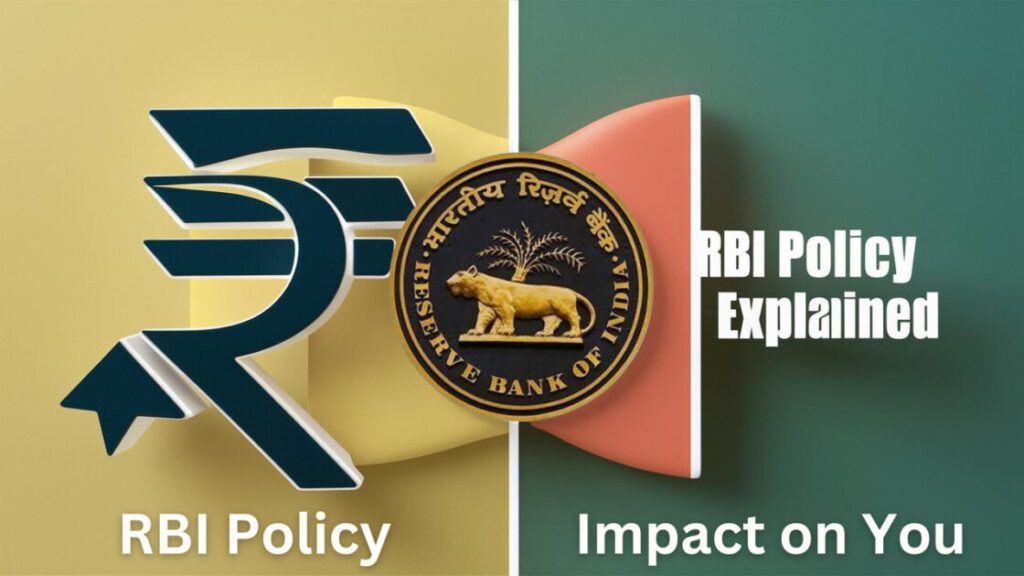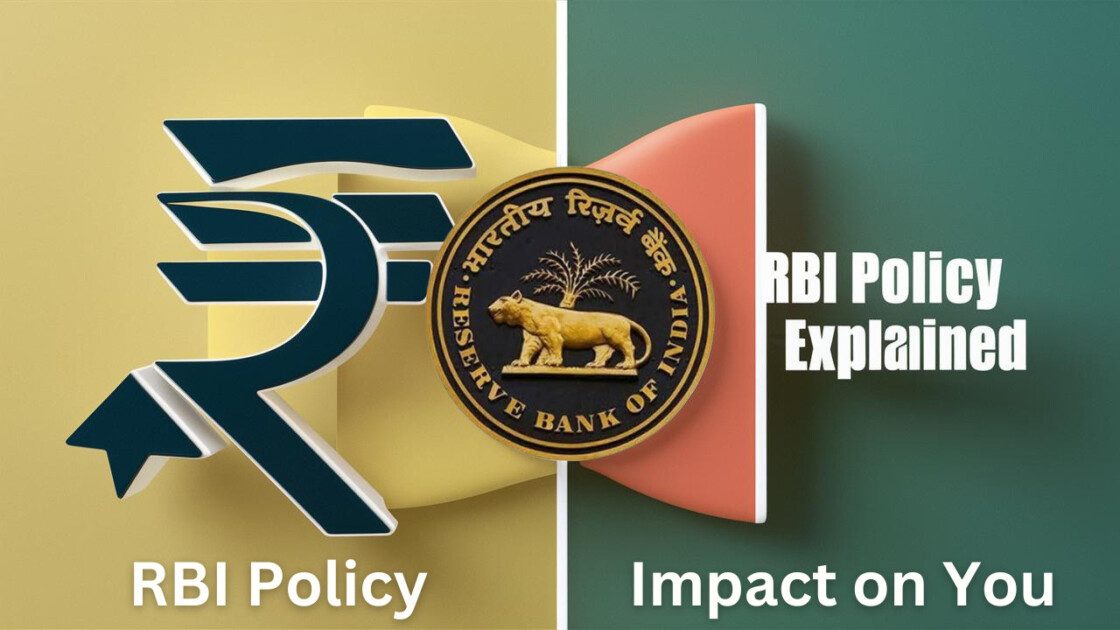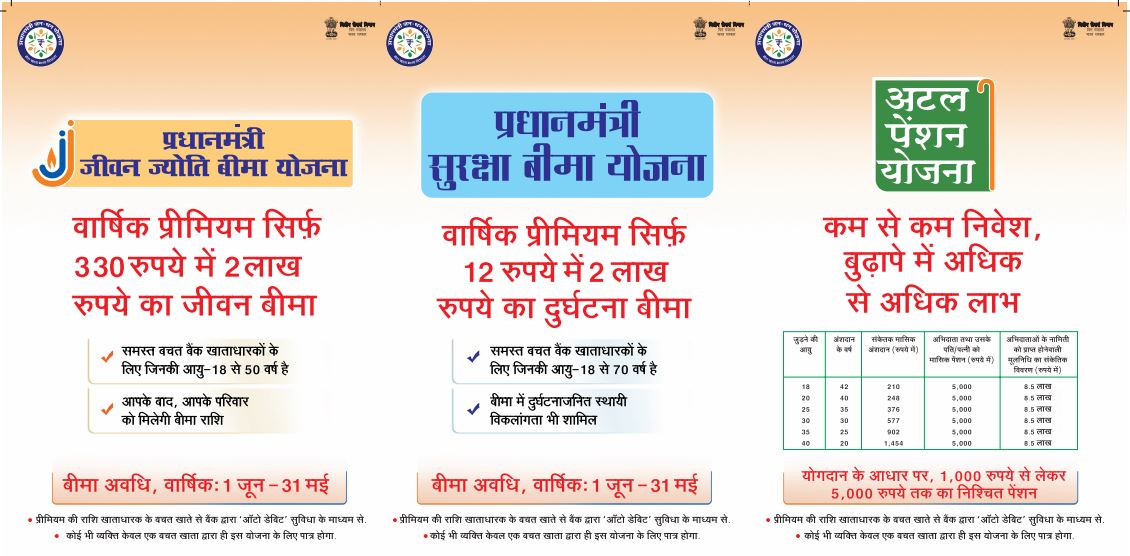RBI Monetary Policy June 2024 | The Reserve Bank of India‘s (RBI) bi-monthly monetary policy meeting held on June 5-7, 2024, was a keenly awaited event, especially considering the ongoing global economic uncertainties. This article dives deep into the key takeaways from the RBI’s policy announcement and explains their potential impact on your finances.

A Recap of Key Decisions:
- Repo Rate Unchanged: The most significant decision was the RBI’s Monetary Policy Committee (MPC) keeping the repo rate, the benchmark interest rate at which the RBI lends to commercial banks, unchanged at 6.5%. This marks the eighth consecutive time the repo rate has remained steady.
- Inflation and Growth Forecast Revised: The RBI revised its inflation forecast for FY 2024-25 upwards to 4.5% from the earlier projection of 4.2%. However, the real GDP (Gross Domestic Product) growth forecast was raised to 7.2% from the previous estimate of 7%.
- Hawkish Stance Maintained: Despite holding the repo rate, the MPC maintained its “withdrawal of accommodation” stance, indicating a cautious approach towards future rate adjustments. This suggests the RBI is prioritizing curbing inflation while keeping an eye on economic growth.
Understanding the Rationale Behind the Decisions:
The RBI’s decisions are driven by a careful assessment of various factors impacting the Indian economy. Here’s a breakdown of the key considerations:
- Inflationary Pressures: Rising global commodity prices, particularly crude oil, and supply chain disruptions continue to exert upward pressure on domestic inflation. The RBI’s decision to maintain the repo rate aims to tame inflation without stifling economic growth.
- Global Economic Slowdown: Concerns about a potential global slowdown due to geopolitical tensions and tightening monetary policies in major economies like the US are a factor. Keeping the repo rate unchanged could help support domestic economic activity.
- Domestic Growth Momentum: The Indian economy is expected to remain resilient despite global headwinds. The revised GDP growth forecast of 7.2% reflects optimism in domestic demand and investment.
What Does the RBI Policy Mean for You?
The RBI’s monetary policy decisions can influence various aspects of your financial life. Here’s an explanation of the potential implications:
- Loan Rates: Since the repo rate remains unchanged, banks may not feel immediate pressure to raise lending rates. This could be good news for borrowers, especially those with existing loans or those looking to take out new loans like home loans or car loans.
- Deposit Rates: With the repo rate steady, banks might not significantly increase deposit rates. However, some banks may offer attractive fixed deposit schemes to attract depositors.
- Investment Climate: The RBI’s focus on controlling inflation and supporting growth could create a stable investment environment. This could encourage investments in stocks, mutual funds, and real estate.
- Financial Planning: It’s crucial to stay updated on the economic landscape and adjust your financial plan accordingly. This might involve reviewing your investment portfolio, debt management strategies, and overall financial goals.
Beyond the Repo Rate: Other Policy Measures
The RBI also announced other measures to support the Indian economy:
- Liquidity Management: The central bank will continue to manage liquidity in the system to ensure smooth monetary policy transmission.
- Financial Stability: The RBI reiterated its commitment to maintaining financial stability by strengthening the regulatory framework for the banking sector.
Looking Ahead: What to Expect in the Future?
The RBI’s future policy actions will depend on how inflation and economic growth evolve. Here are some potential scenarios:
- If inflation remains stubbornly high: The RBI might be forced to raise the repo rate in the coming months to cool down inflation.
- If economic growth slows down significantly: The RBI could adopt a more accommodative stance by reducing the repo rate or injecting liquidity into the system to stimulate growth.
The RBI will closely monitor economic data and adjust its policies accordingly. It’s advisable to stay informed about future monetary policy pronouncements to make informed financial decisions.
Resources for Your RBI Monetary Policy June 2024 Blog Post:
RBI Official Resources:
- RBI Press Release on Monetary Policy June 2024: https://rbi.org.in/Scripts/BS_PressReleaseDisplay.aspx – This is the official announcement from the RBI detailing the policy decisions and rationale.
- RBI Monetary Policy Statements: https://rbi.org.in/Scripts/Annualpolicy.aspx – This webpage provides access to all past RBI monetary policy statements, allowing readers to compare past and present decisions.
- Reserve Bank of India Website: https://www.rbi.org.in/ – The RBI website offers a wealth of information on monetary policy, regulations, and the Indian economy.
News Articles and Analysis:
- The Economic Times: RBI MPC Meeting 2024 at a glance: https://www.livemint.com/economy/rbi-mpc-meeting-2024-live-monetary-policy-committee-review-shaktikanta-das-india-economy-repo-rate-interest-rate-11707331135103.html – Offers a concise overview of the MPC meeting and key decisions.
- The Times of India: RBI Monetary Policy 2024 Highlights: https://economictimes.indiatimes.com/news/newsblogs/rbi-mpc-meet-2023-news-live-shaktikanta-das-latest-updates-8-february-2023/liveblog/97711786.cms – Provides highlights of the policy meeting with insights from RBI Governor Shaktikanta Das.
- The Hindu BusinessLine: RBI Monetary Policy Live: RBI holds repo rate at 6.50%: https://www.thehindubusinessline.com/profile/author/Anchal-Verma-21624/ – Offers live updates and analysis from the MPC meeting.
Additional Resources:
- Investopedia: Repo Rate: https://www.investopedia.com/terms/t/term-repurchase-agreement.asp – Provides a clear explanation of the repo rate and its impact on the economy.
- Economic Survey of India: https://www.indiabudget.gov.in/economicsurvey/ – This annual report by the Government of India provides insights into the Indian economy and its future outlook.
By including these resources, you provide your readers with a variety of perspectives and additional information to delve deeper into the RBI’s monetary policy and its implications. Remember to choose credible sources and hyperlink them appropriately within your blog post.
Conclusion:
The RBI’s June 2024 monetary policy decisions reflect a balanced approach towards managing inflation and supporting economic growth. While keeping the repo rate unchanged provides some relief for borrowers, the maintained hawkish stance indicates the RBI’s vigilance against inflationary pressures. Understanding these decisions and their potential impact will help you navigate your finances effectively in the current economic climate. Remember, staying informed and adapting your financial strategy accordingly are key to achieving your financial goals.
Also Read –
- One Click to Get Canva Premium For FREE: Guide to Lifetime Access 2024-25
- पेंशन निधि से जुड़ी खबरें: सम्पूर्ण जानकारी 2024-25
- हनुमान चालीसा: भक्ति, शक्ति और साहस का स्त्रोत 2024
- From Sketch to Sensation: The Rise of the Smurf Cat
- Omnichannel Digital Marketing: Creating a Seamless Customer Journey Across All Touchpoints
RBI Monetary Policy June 2024: FAQs
1. What was the biggest decision from the RBI’s June 2024 policy meeting?
The most significant decision was the RBI keeping the repo rate unchanged at 6.5%. This marks eight consecutive times the rate has remained steady.
2. Did the RBI change its inflation or growth forecast?
Yes, the RBI revised its inflation forecast for FY 2024-25 upwards to 4.5% (from 4.2%). However, the real GDP growth forecast was raised to 7.2% (from 7%).
3. Why did the RBI maintain the repo rate?
The RBI is balancing two key factors:
Controlling inflation: Rising global commodity prices and supply chain disruptions put upward pressure on inflation. Maintaining the repo rate aims to curb inflation without hindering economic growth.
Supporting economic growth: Despite global headwinds, the Indian economy is expected to remain resilient. The revised GDP growth forecast reflects optimism in domestic demand and investment.
4. What does the RBI policy mean for my loans?
With the repo rate unchanged, banks might not raise lending rates immediately. This could be good news for existing borrowers and those looking for new loans.
5. Will deposit rates change?
Since the repo rate remains steady, banks might not significantly increase deposit rates. However, some banks may offer attractive fixed deposit schemes to attract depositors.
6. How will this policy impact my investments?
The RBI’s focus on controlling inflation and supporting growth could create a stable investment environment. This could benefit investments in stocks, mutual funds, and real estate.
7. Should I adjust my financial plan?
It’s always crucial to stay updated on the economic landscape and adjust your financial plan accordingly. This might involve reviewing your investment portfolio, debt management strategies, and overall financial goals.
8. What other measures did the RBI announce?
The RBI will continue to manage liquidity in the system and strengthen the regulatory framework for the banking sector to ensure financial stability.
9. What can we expect from the RBI’s future policy actions?
The RBI will monitor economic data and adjust policies based on inflation and growth trends. If inflation remains high, the repo rate might increase in the coming months. Conversely, a significant economic slowdown could prompt the RBI to lower the repo rate or inject liquidity.
10. Where can I find more information about the RBI’s monetary policy?
You can visit the RBI website (https://www.rbi.org.in/) for official pronouncements and reports.










1 Comment
This post is a real eye-opener.